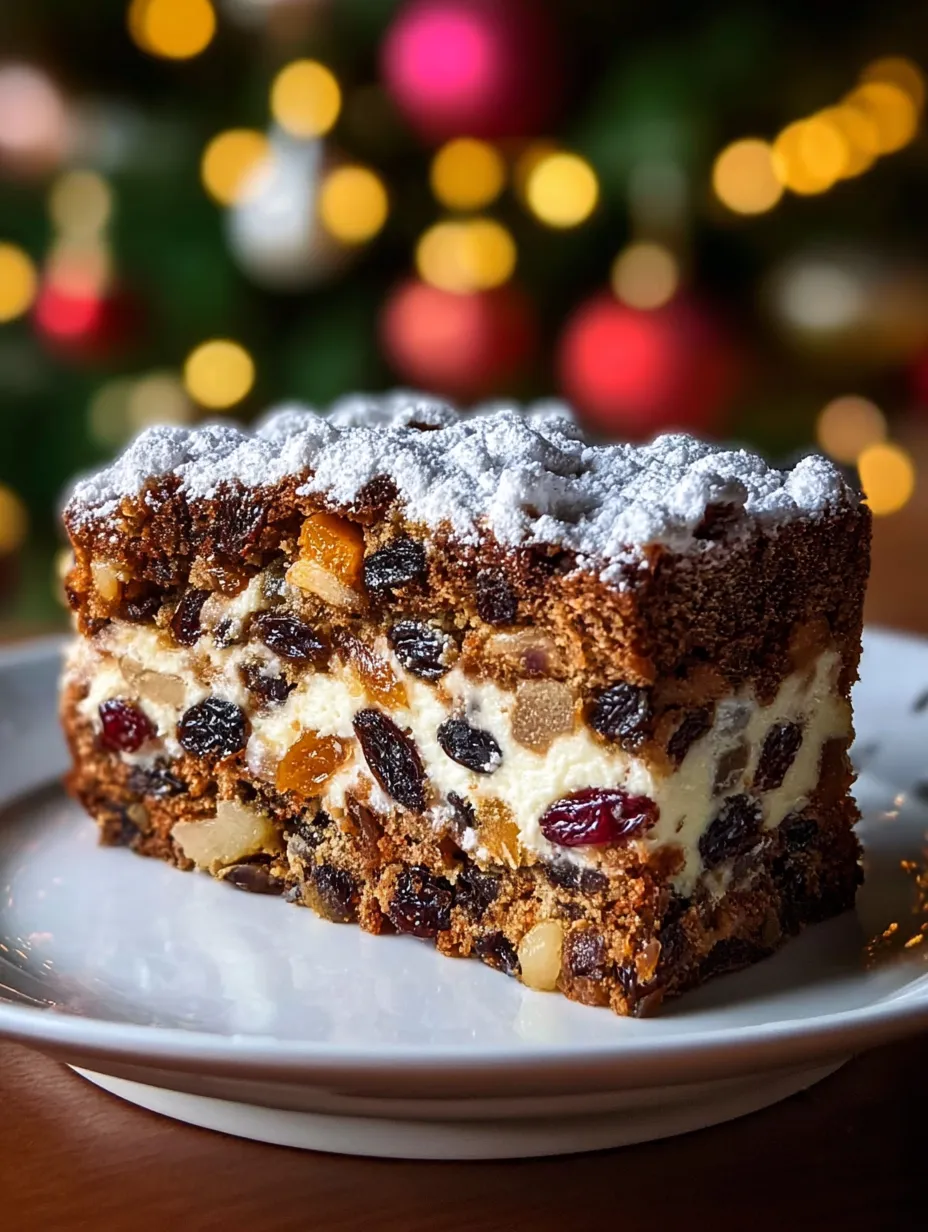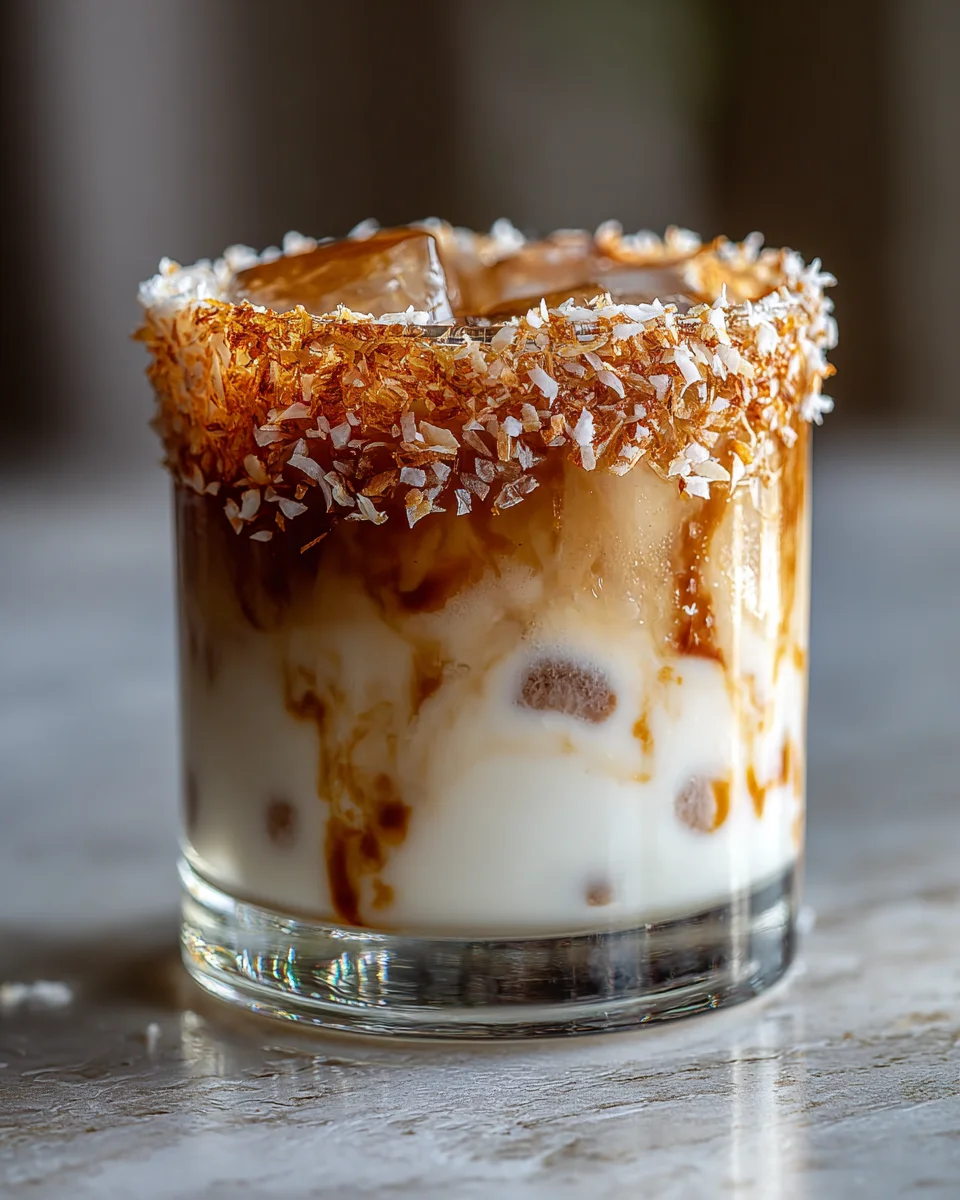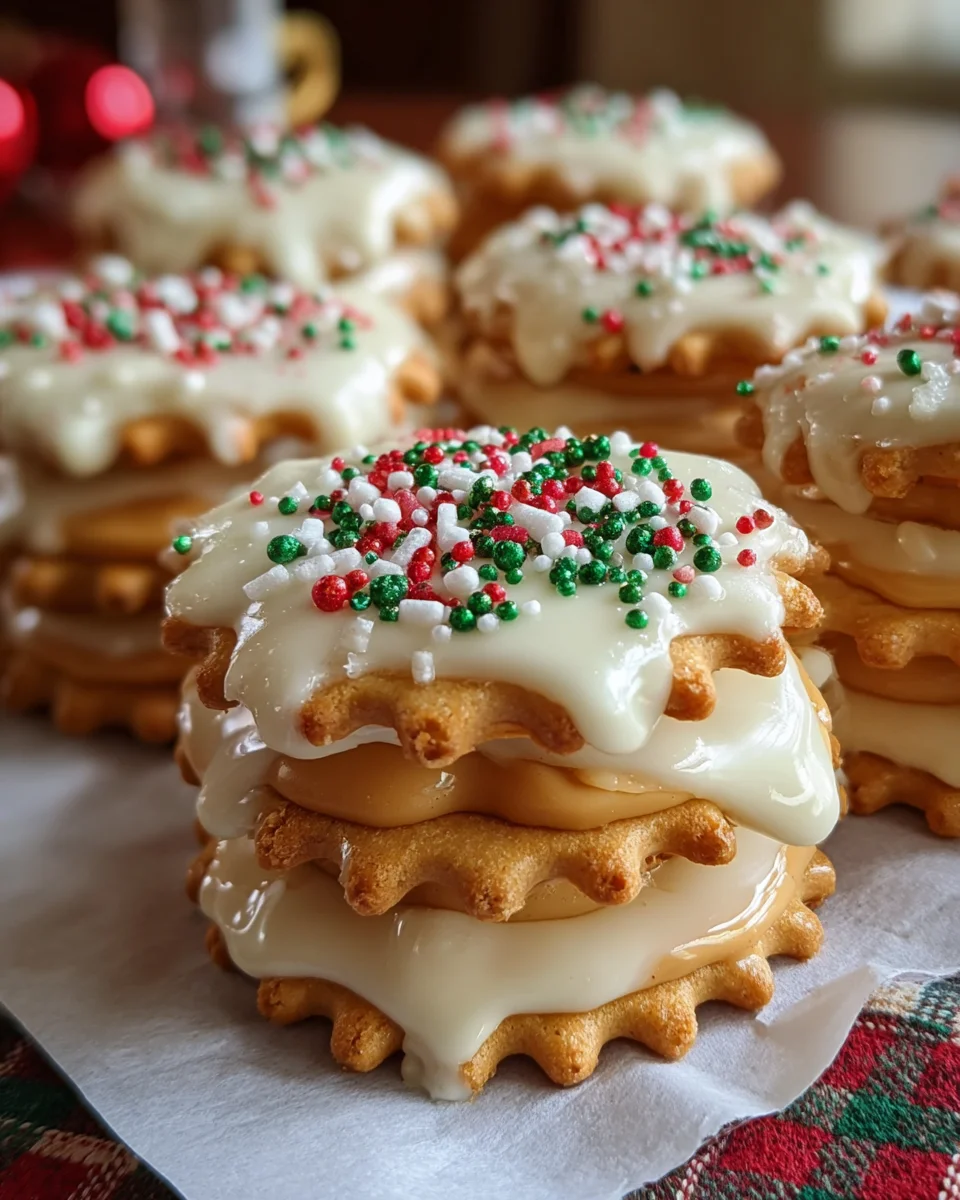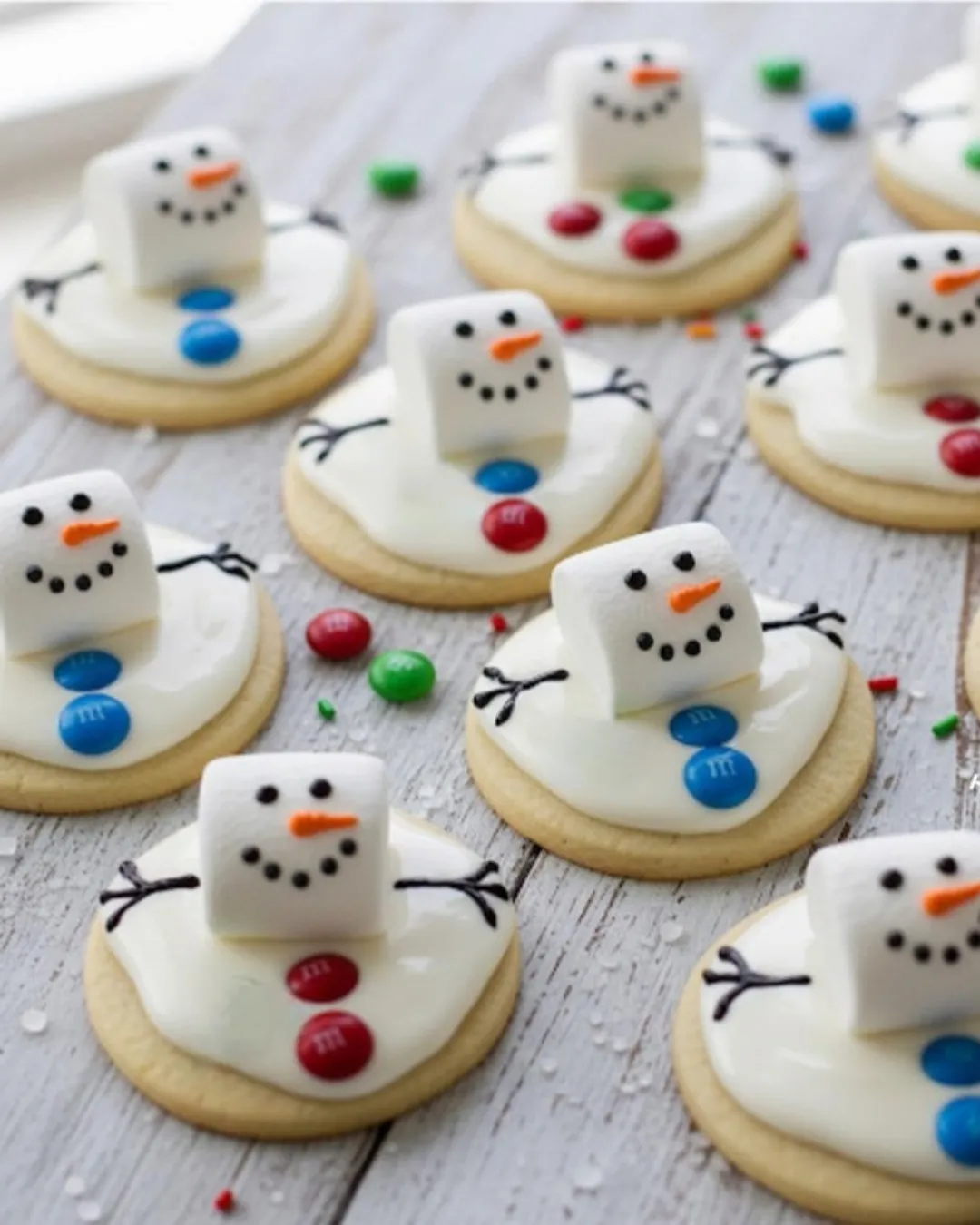The Heart of Holiday Baking
There’s something undeniably magical about a traditional Christmas cake. The smell alone—warm spices, brandy-soaked fruits, and golden brown sweetness—feels like a cozy hug from December itself. This isn’t your average dessert; it’s a holiday tradition passed down through generations. It’s the kind of cake that fills the kitchen with nostalgia and makes your home smell like Christmas morning.
Whether you’re baking it for your family, gifting it to a friend, or simply indulging your inner baker, a good fruit cake is a labor of love—and well worth the effort. So grab your apron, preheat the oven, and let’s bring this festive beauty to life!

What Makes a Traditional Christmas Cake Special?
This isn’t just a fruit cake; it’s a holiday heirloom wrapped in flavor. A proper Christmas cake is:
- Packed to the brim with soaked dried fruits and crunchy nuts
- Spiced with warm, festive flavors like cinnamon, nutmeg, and cloves
- Moist and dense, never dry or crumbly
- Touched with brandy (or orange juice if you prefer alcohol-free)
- Topped with a snowy dusting of powdered sugar or dressed up with icing
- Often layered with a creamy filling (like the version in the image!)
And yes, it’s rich—but that’s exactly the point. Christmas comes once a year. This is a cake worthy of the occasion.
Ingredients Breakdown: What’s in the Magic Mix?
Let’s break down the star players in this holiday symphony.
Mixed Dried Fruits
These bring all the chewy, juicy, sweet-tart flavor. You’ll need:
- 2 cups mixed dried fruits (a mix of raisins, currants, sultanas, dried cherries, chopped apricots, or cranberries)
They’re the soul of the cake. The more colorful and varied, the better!
Chopped Nuts
Nuts add texture and contrast to the soft fruit.
- ½ cup chopped nuts (almonds, pecans, walnuts – or a combo)
If you’re nut-free, feel free to skip them or swap for sunflower seeds for a little crunch.
Brandy and Soaking
Soaking isn’t optional—it’s essential. Brandy adds flavor, moisture, and preservation.
- ¼ cup brandy (plus extra for feeding later)
Don’t drink? Orange juice or apple cider makes a great substitute.
Rich Spices
Spices bring that unmistakable holiday flavor:
- Cinnamon, nutmeg, and cloves. Warming, comforting, nostalgic.
Butter, Eggs, and Molasses
These are your moisture-makers and richness boosters.
- Unsalted butter (1 cup) – for a soft crumb
- Brown sugar (1 cup) – for depth and molasses flavor
- Eggs (4 large) – for structure
- Molasses or golden syrup – to deepen the flavor and color
Let’s Talk Texture: Moist, Dense, and Dreamy
A great Christmas cake isn’t light and fluffy like a sponge—it’s dense, but not heavy; moist, but not soggy. That creamy filling you see in the image? That’s a slight modern twist on tradition. It adds a rich layer between the fruity goodness, creating both visual appeal and extra indulgence.
For the filling:
- ½ cup unsalted butter
- 1–1½ cups powdered sugar
- 1 tsp vanilla
Whip it into a fluffy, buttercream-style layer to spread between your two cake layers after cooling.
Prepping the Perfect Fruit Mix (Soaking Tips & Tricks)
First things first—soak your fruits the night before.
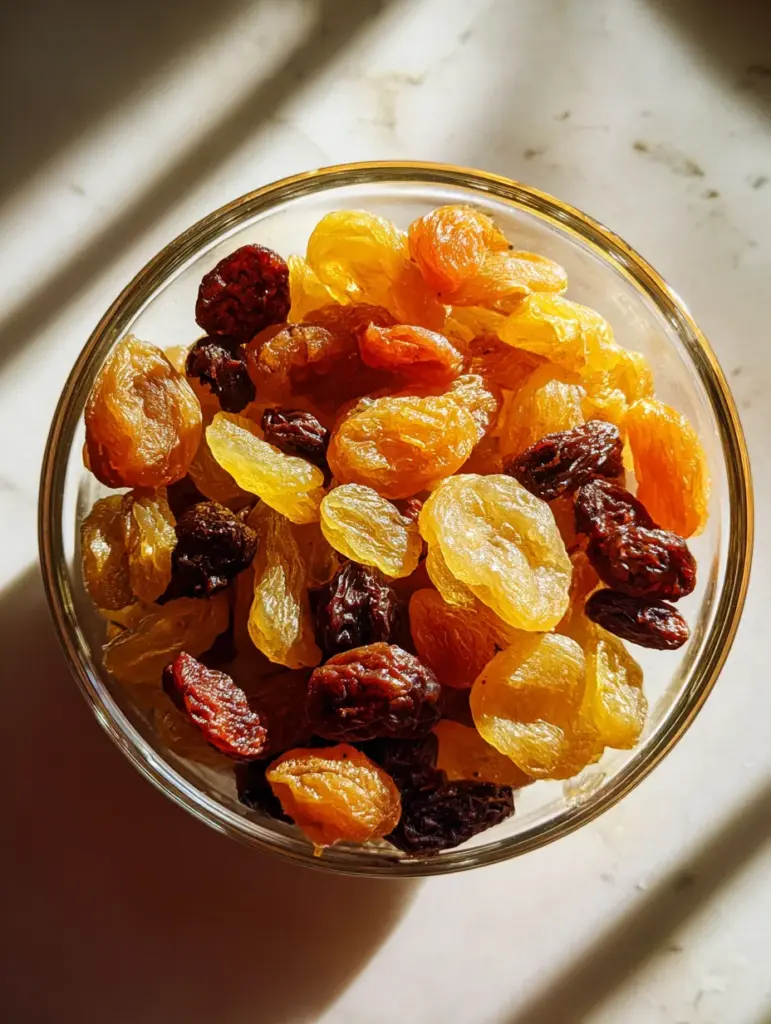
In a large bowl:
- Mix your dried fruits.
- Pour over the brandy.
- Cover with a plate or wrap.
- Leave overnight at room temperature.
This allows the fruit to plump up, become juicy, and absorb that beautiful boozy note (or citrus, if you’re alcohol-free). Skipping this step? Your cake will suffer.
Why Soaking Matters – Flavor, Moisture, and Tradition
Think of soaking like marinating. It gives your dried fruits life again. Instead of being chewy or hard, they become juicy little flavor bombs. It also prevents them from drying out the cake while baking. Plus, it helps preserve the cake—especially when you “feed” it with brandy in the weeks leading up to Christmas.
So, no shortcuts here. Let it soak!
Batter Up: Mixing Your Cake Base to Perfection
Once your fruits are ready, it’s time to whip up your batter:
- Cream butter and brown sugar until fluffy.
- Add eggs, one at a time. Mix thoroughly.
- Stir in molasses and vanilla.
This step is where the structure begins. Take your time here—the better you beat, the lighter the final texture.
Combining Wet & Dry: Getting the Consistency Right

In another bowl:
- Sift together flour, baking powder, and spices (cinnamon, nutmeg, cloves, and a pinch of salt).
- Slowly add to the wet ingredients, folding gently.
Don’t overmix! You want it smooth, not elastic.
Once that’s done, it’s time to bring the fruit and nuts to the party.
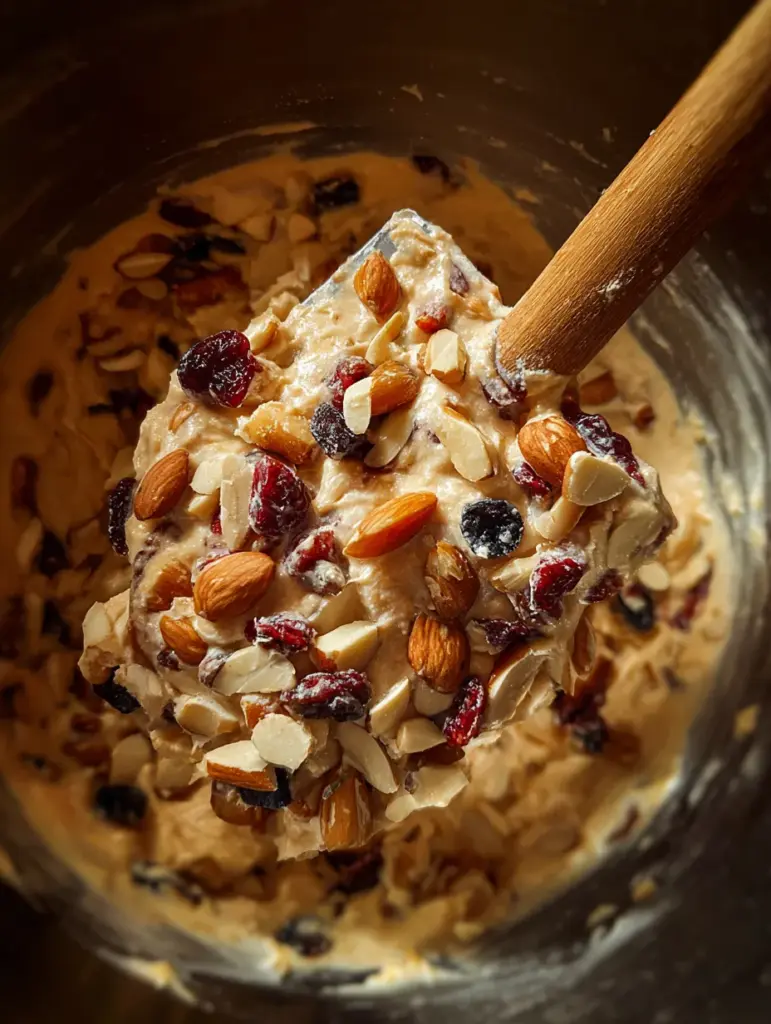
Adding in the Fruit & Nuts Without Sinking the Cake
Here’s a trick: toss the soaked fruits and chopped nuts in a spoonful of flour before folding into the batter. This keeps them from sinking to the bottom of the cake while baking.
Gently stir them into the batter, ensuring even distribution. You want every bite to be packed with festive goodness.
Baking It Slow and Low: Patience is a Baker’s Secret Weapon
Grease and line your 8-inch cake pan with parchment.
Pour in the thick, rich batter. Smooth the top.
Bake at 300°F (150°C) for 2 to 2½ hours.
✅ Check at 2 hours with a toothpick.
✅ If the top darkens too soon, cover loosely with foil.
It’s a slow bake, not a quick one. You’re coaxing out richness, not rushing.
Cooling & Curing: How Long Should You Wait?
After baking, let the cake cool completely in the pan.
Then remove and wrap it in:
- Parchment paper
- Aluminum foil
- An airtight container
Let it cure. Ideally, you start this in early December (or even November) and let it age. The longer it rests, the richer the flavor.
Feeding the Cake: What It Is & Why It Matters
Every few days, “feed” the cake:
- Unwrap it
- Brush on a few teaspoons of brandy
- Wrap again and let it rest
This keeps it moist and enhances that rich, boozy flavor. Do this weekly up until Christmas Eve for best results.
Let’s Talk Fillings – That Creamy Center in the Image
While traditional Christmas cakes are often served plain or iced, the one in the image has a creamy filling. To match that:
Make a simple vanilla buttercream:
- ½ cup butter
- 1–1½ cups powdered sugar
- 1 tsp vanilla
- Splash of cream if needed
Whip it smooth and spread it between two halved layers of your baked cake. It’s a festive twist that feels luxurious.
Frosting, Powdered Sugar, and Decorating Tips
Keep it simple and elegant. Here’s what you can do:
- Dust the top with powdered sugar for a snowy effect (as in the image).
- Top with extra dried fruits or glazed cherries for sparkle.
- Add a festive ribbon or fresh holly for presentation.
Avoid heavy icing if you’re going with the cream filling—it can be too much

Storage Tips: Keeping It Fresh Through the Holidays
One of the best parts about a traditional Christmas cake is how well it keeps. In fact, it gets better with time—like a fine wine or your favorite cozy sweater. Here’s how to keep it moist, flavorful, and fresh through the season:
- Wrap it tightly in parchment paper first, then a layer of foil.
- Store in a cool, dark place like a pantry or cupboard.
- Avoid refrigeration unless you live in a humid climate (it can dry it out).
- If you’ve filled it with cream or buttercream, refrigerate it and consume within 3–5 days.
Want to make it ahead? Bake in late November, cure it, and feed it weekly with brandy. Come Christmas, you’ll have a perfectly matured masterpiece ready to go!
Serving Suggestions: Slice It Like a Pro
This cake is dense, so you don’t need thick slices to impress. Use a sharp serrated knife and cut slowly to avoid crumbling.
Tips for the perfect slice:
- Serve at room temperature for the best flavor.
- Pair with a dollop of clotted cream, whipped cream, or a drizzle of brandy sauce.
- Add a hot drink on the side—coffee, tea, mulled wine, or spiced cider.
It’s rich, satisfying, and pairs perfectly with quiet evenings by the fireplace or festive brunches with friends.
Pairing Ideas: What Goes Well with Christmas Cake?
You’ve put in the work. Now enjoy it in style. Here are some perfect pairings to elevate the experience:
- Hot Beverages:
- Chai tea
- Espresso
- Mulled wine
- Spiced hot chocolate
- Cheese:
- Sharp cheddar
- Stilton or other blue cheese (sounds odd but is heavenly)
- Brie or camembert for creamy contrast
- Liqueurs:
- Brandy
- Amaretto
- Irish cream
This cake isn’t just a dessert—it’s an experience.
You may like these recipes as well :
Christmas White Chocolate Cranberry Pecan Candy Recipe – The Ultimate Festive Treat
Creamy Cranberry Pecan Christmas Tree Appetizers
Make-Ahead Strategy for a Stress-Free December
Let’s be honest—holiday baking can get hectic. Between shopping, decorating, and hosting, making a Christmas cake from scratch sounds like a mountain to climb. But it doesn’t have to be.
Here’s how to get ahead:
- Week 1 (Late November):
- Soak your fruit
- Bake the cake
- Cool, wrap, and store
- Week 2–3:
- Feed it with brandy
- Make and freeze your buttercream (if using filling)
- Week of Christmas:
- Defrost buttercream
- Assemble cake
- Dust with powdered sugar
- Serve and enjoy
Doing it in stages makes it manageable and fun instead of overwhelming.
Common Mistakes to Avoid When Making Fruit Cake
Even the best bakers slip up. Avoid these common pitfalls:
- Not soaking the fruit: Dry, tough fruit ruins the texture
- Using too much liquid: Makes the cake soggy and unstable
- Overmixing: Can lead to a rubbery texture
- Baking too hot: Causes burnt edges and undercooked centers
- Not cooling before wrapping: Traps steam = soggy cake
- Feeding too much brandy at once: Less is more. A little each week is the key.
Stick to the process, and you’ll end up with a showstopper every single time.
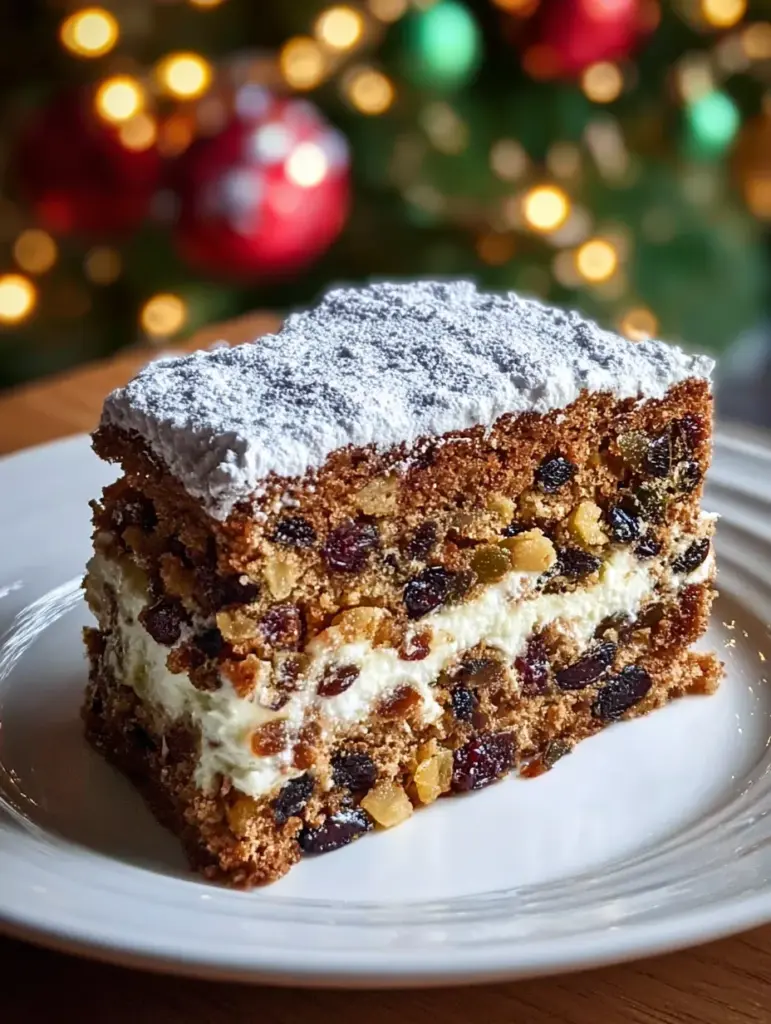
Conclusion: Bringing Back the Joy of Baking Traditions
This traditional Christmas cake isn’t just a recipe—it’s a ritual. It’s about slowing down, filling your home with warmth and spice, and savoring the season. Whether you make it as a family tradition, gift it to someone you love, or bake it solo with carols in the background, this cake is a heartfelt tribute to holiday joy.
Yes, it takes time. Yes, it’s rich. But that’s the point. In a season full of hustle, this cake reminds us to savor the process—and every single bite.
So go ahead. Soak those fruits. Bake with love. Dust it with sugar. And share it proudly.
Merry Christmas and happy baking! 🎄🎂✨
Similar recipes :
Christmas Chocolate Pecan Pie Balls: The Ultimate No-Bake Holiday Treat
Christmas Cranberry Walnut Cheese Balls Recipe: The Ultimate Holiday Crowd-Pleaser
Christmas Cookie Lasagna Recipe: The Ultimate Festive Dessert to Wow Your Guests
FAQs
1. Can I make this Christmas cake alcohol-free?
Absolutely! Swap the brandy for orange juice, apple cider, or strong black tea. You’ll still get great flavor without the booze.
2. How long in advance can I make this cake?
You can bake it up to 6 weeks ahead of Christmas if you’re curing and feeding it. The flavor gets better with time!
3. What’s the creamy filling in the middle of the cake in the image?
It’s a simple vanilla buttercream, which is a modern (and delicious) twist. It adds moisture and richness. You can skip it or go traditional with marzipan and royal icing.
4. Can I freeze the cake?
Yes! Wrap it tightly in parchment and foil, then freeze for up to 3 months. Thaw overnight in the fridge before serving.
5. How do I know when my Christmas cake is fully baked?
Insert a toothpick or skewer in the center. If it comes out clean (or with a few moist crumbs), it’s ready. The baking time can range from 2 to 2½ hours depending on your oven.

